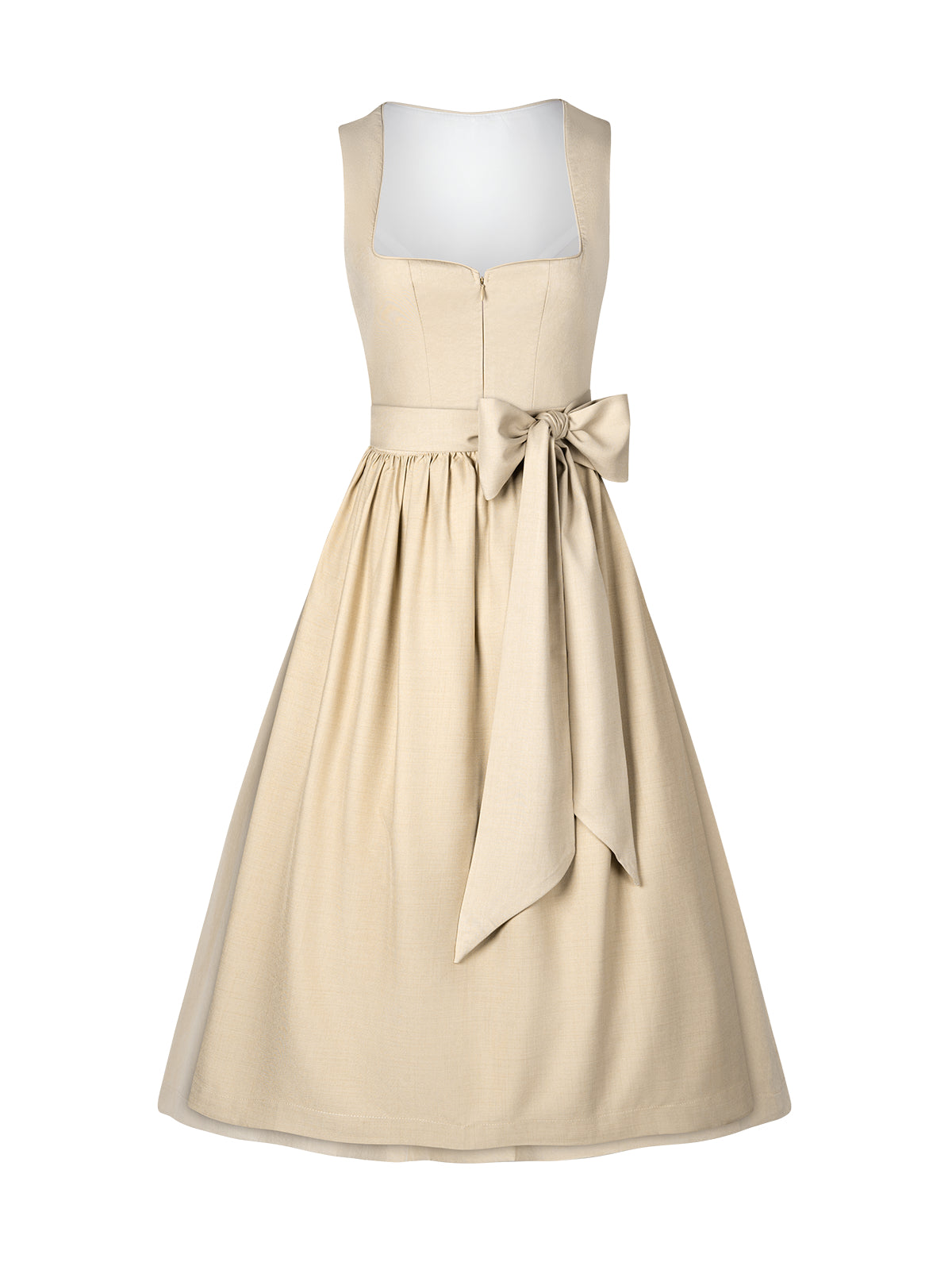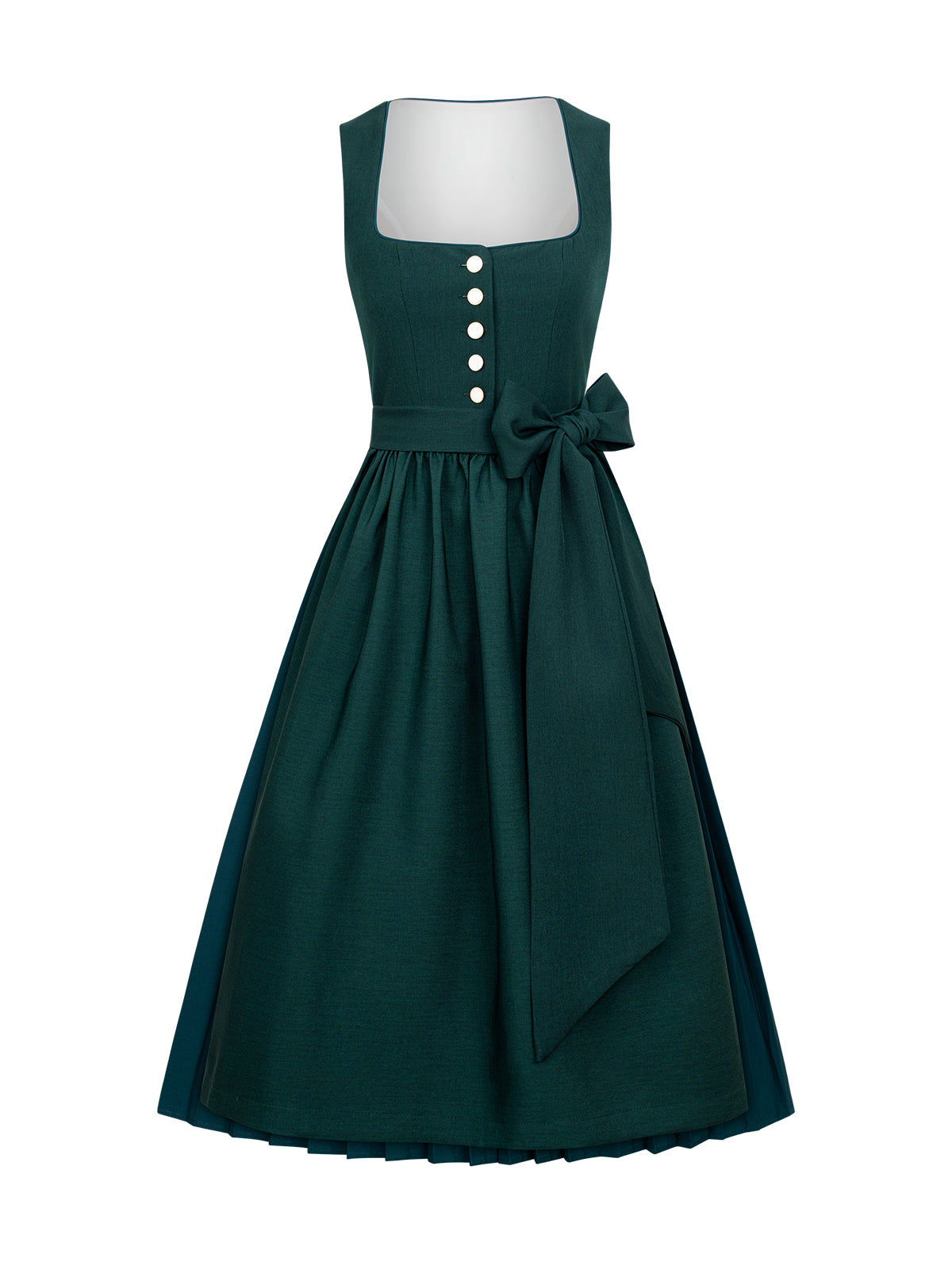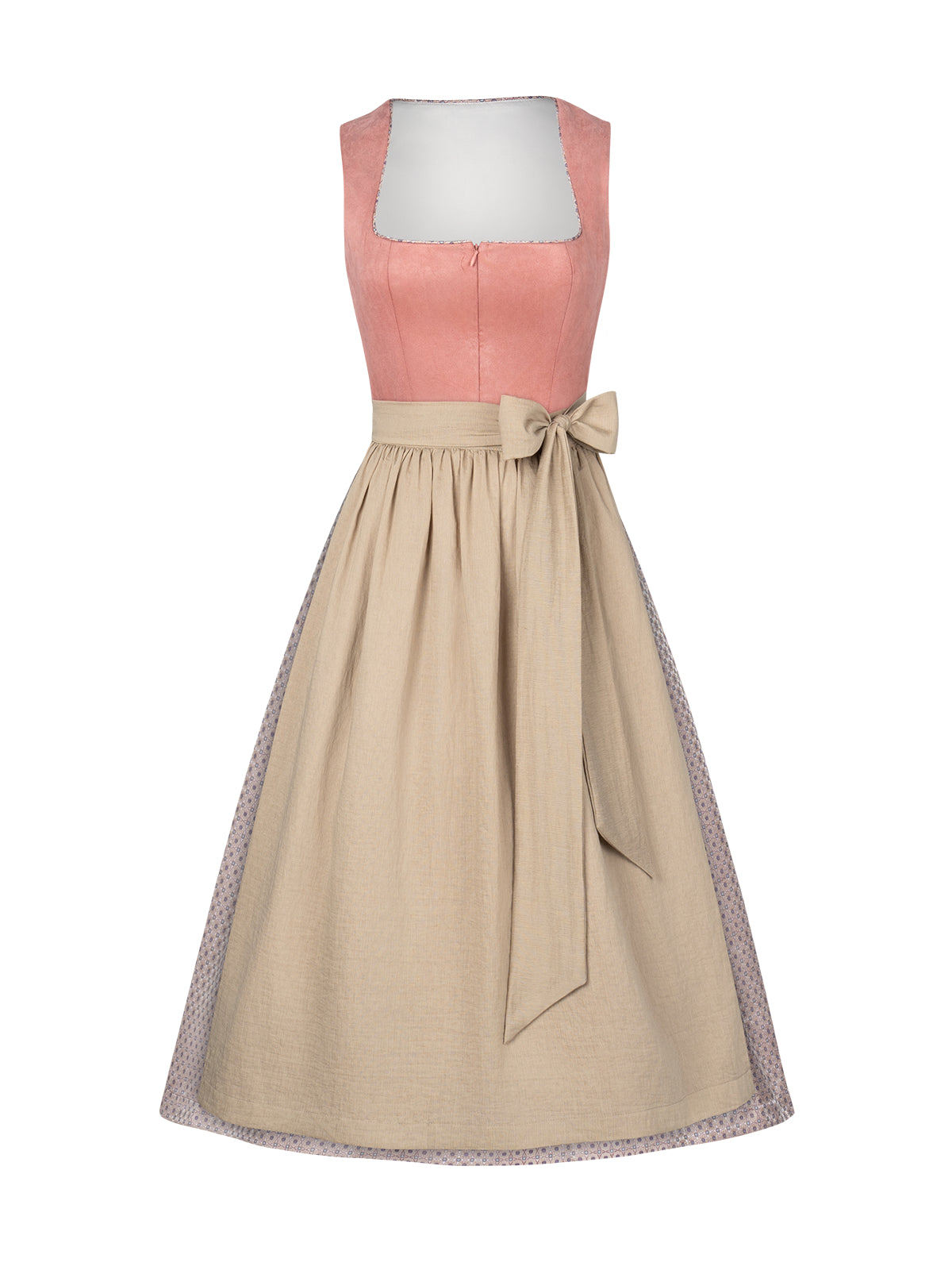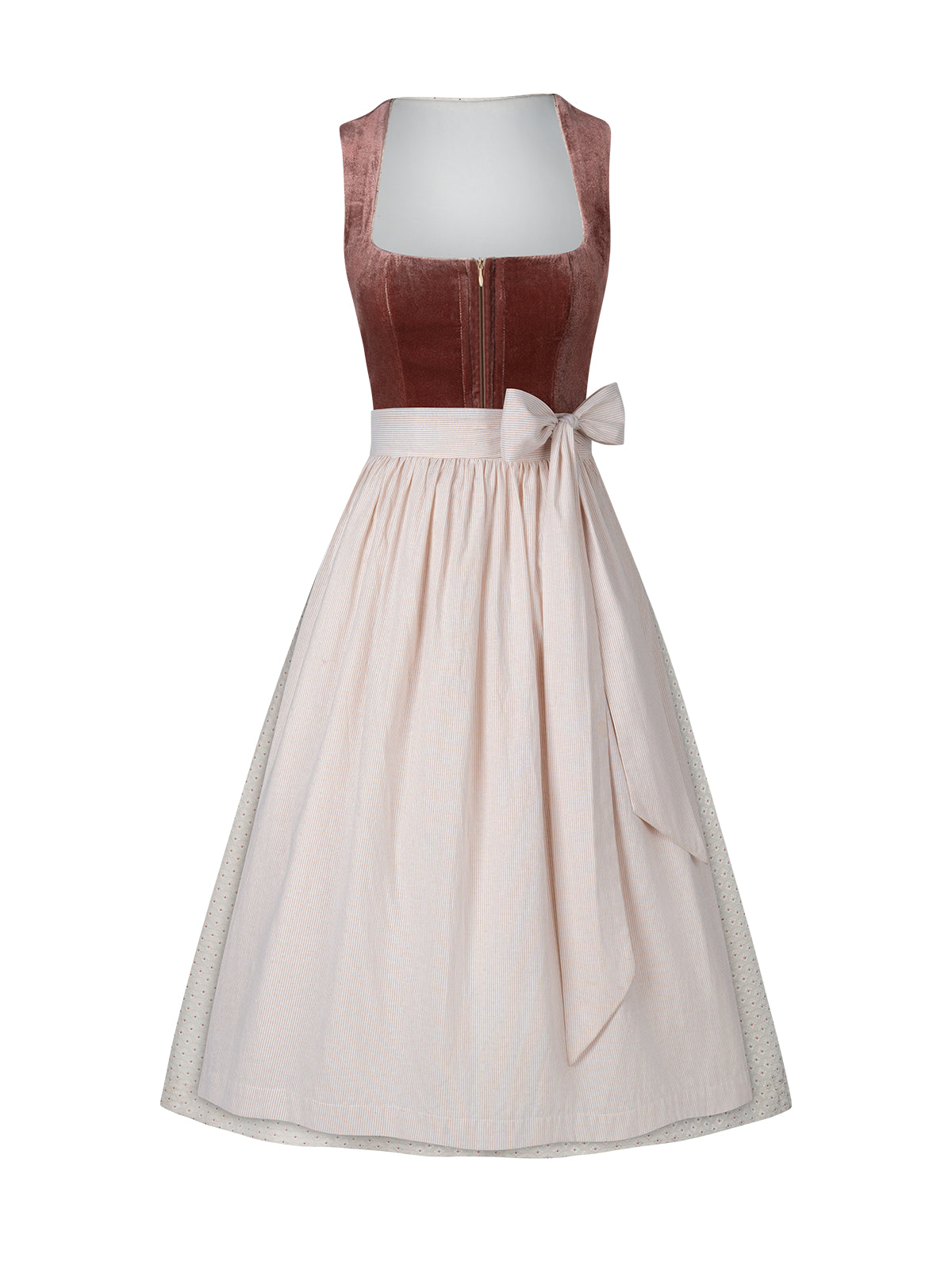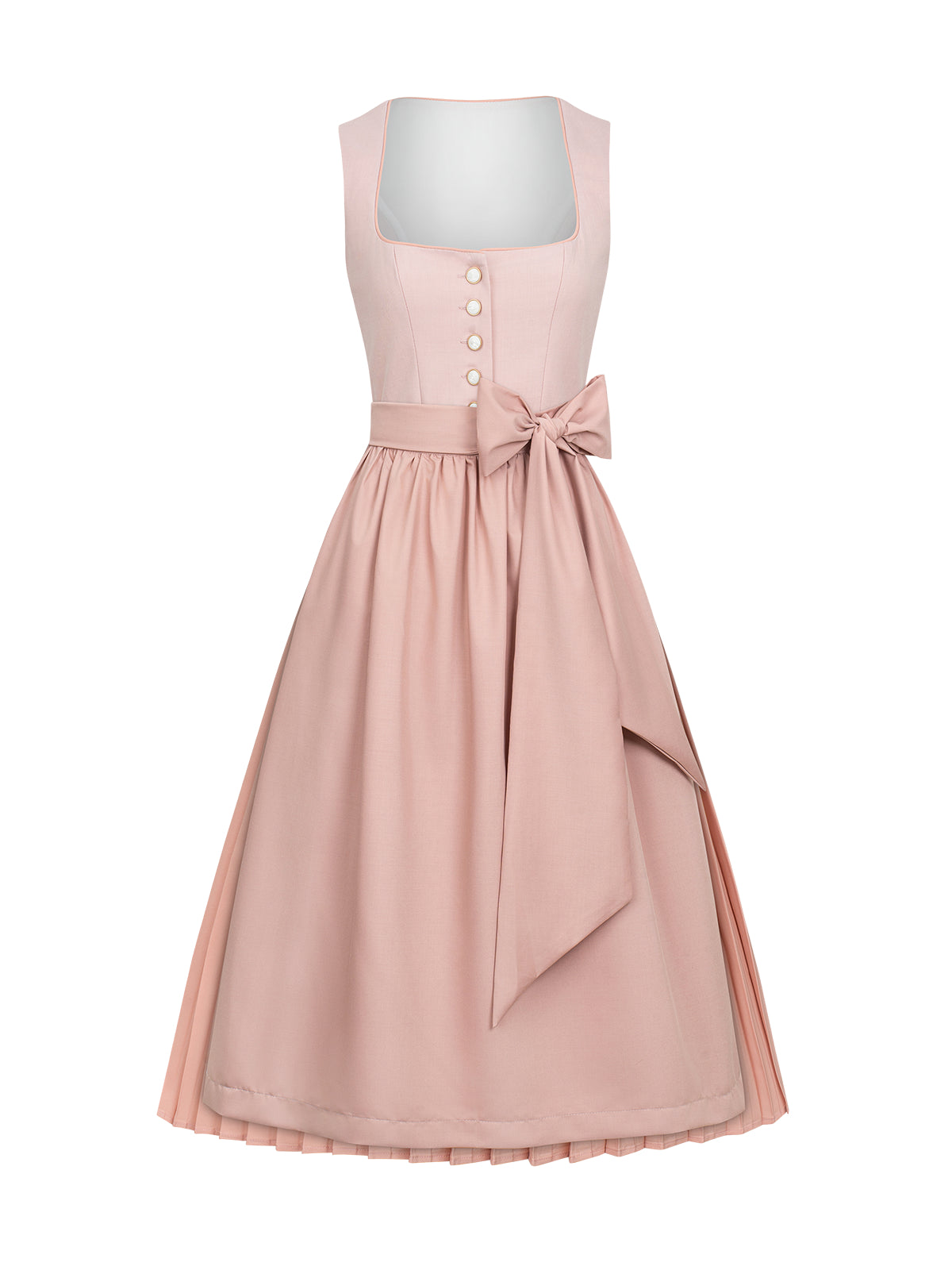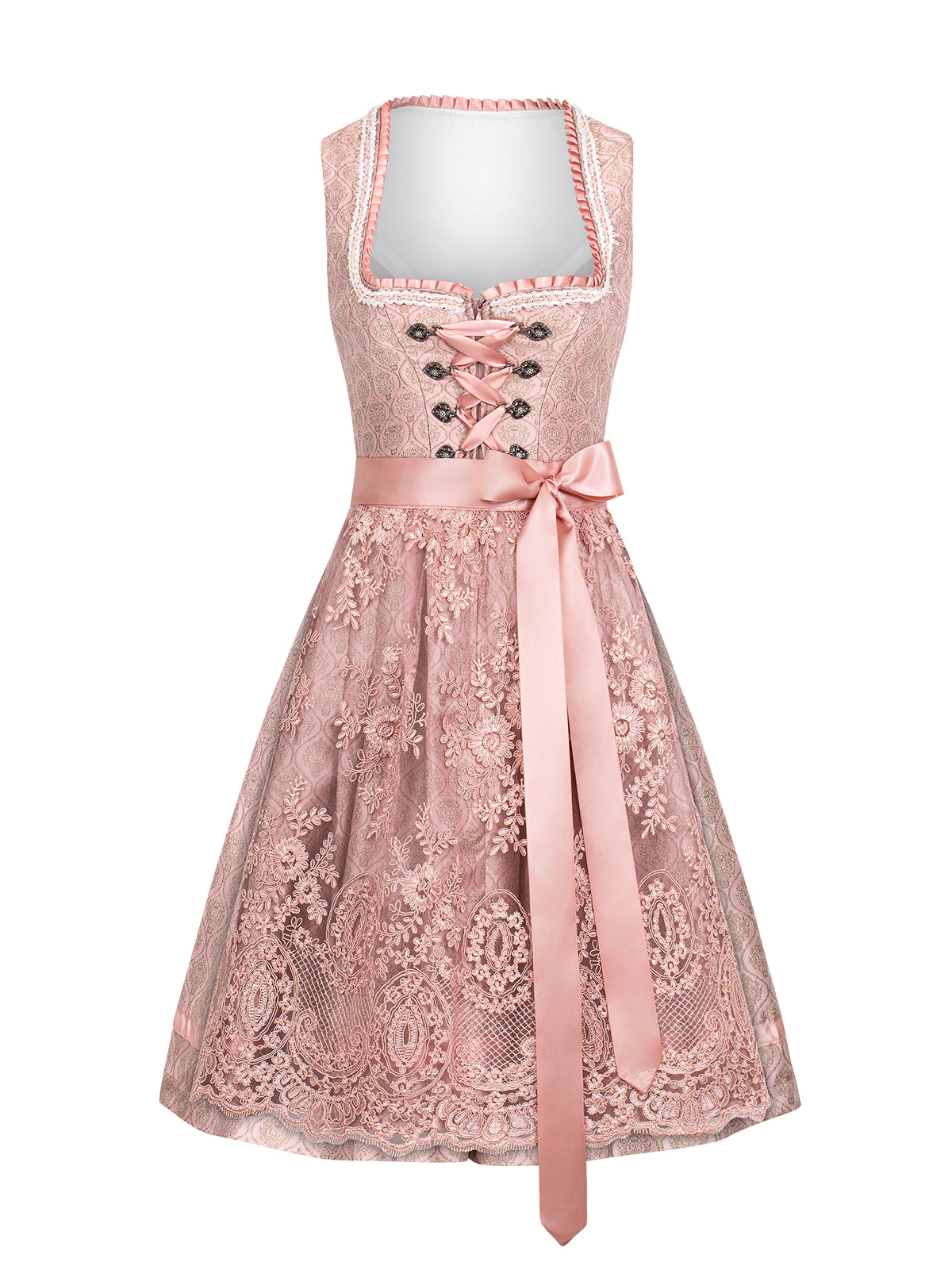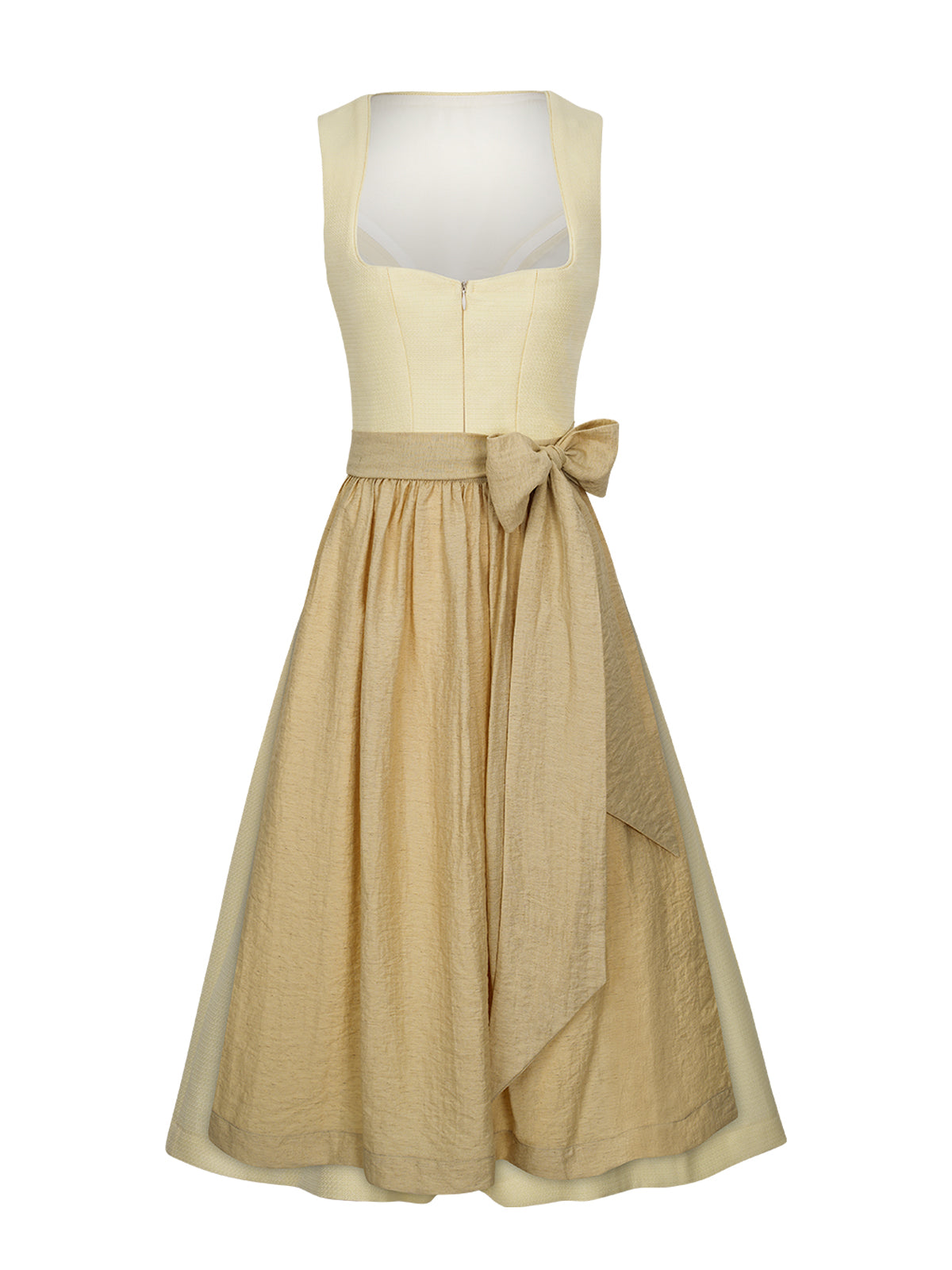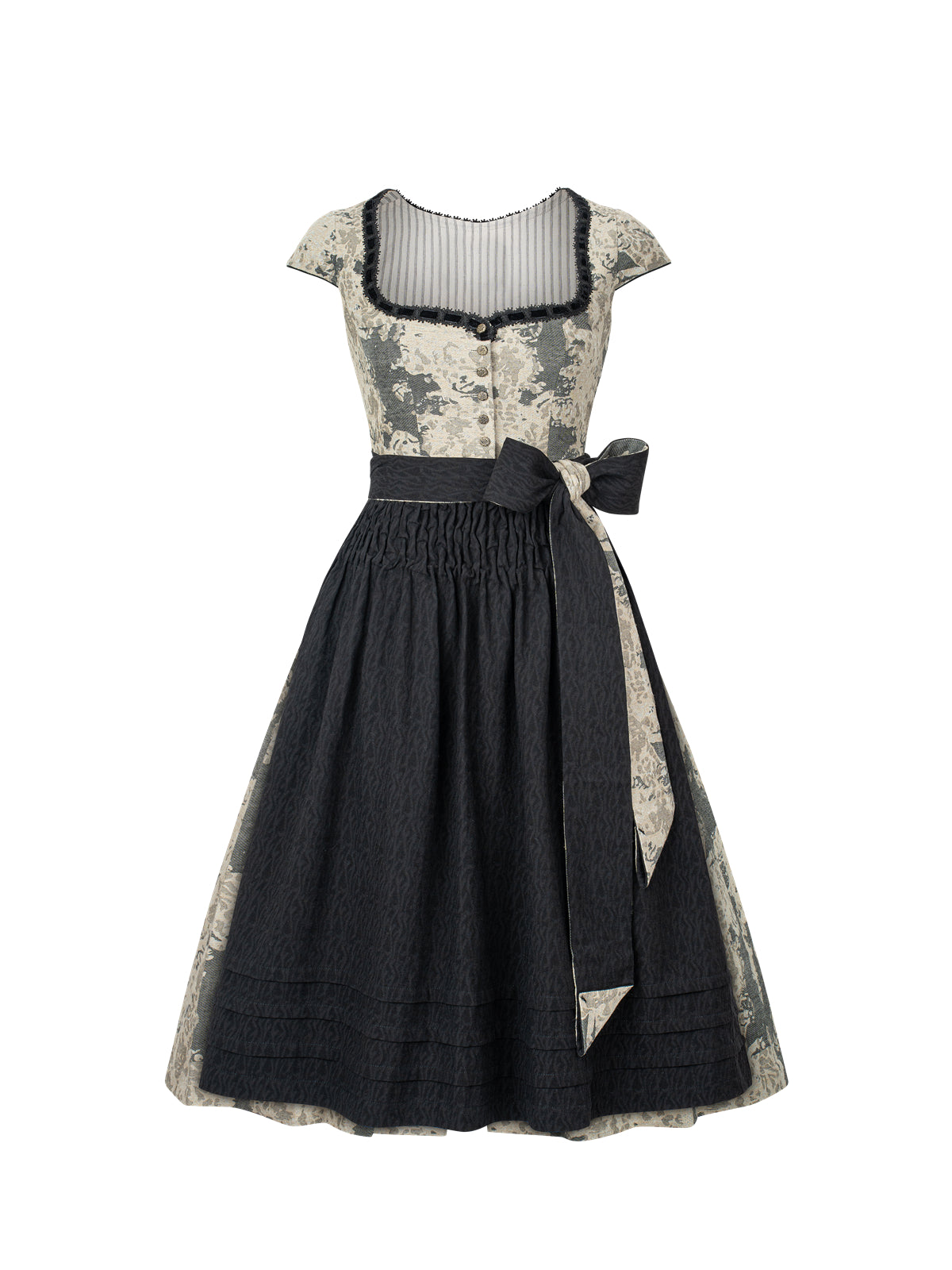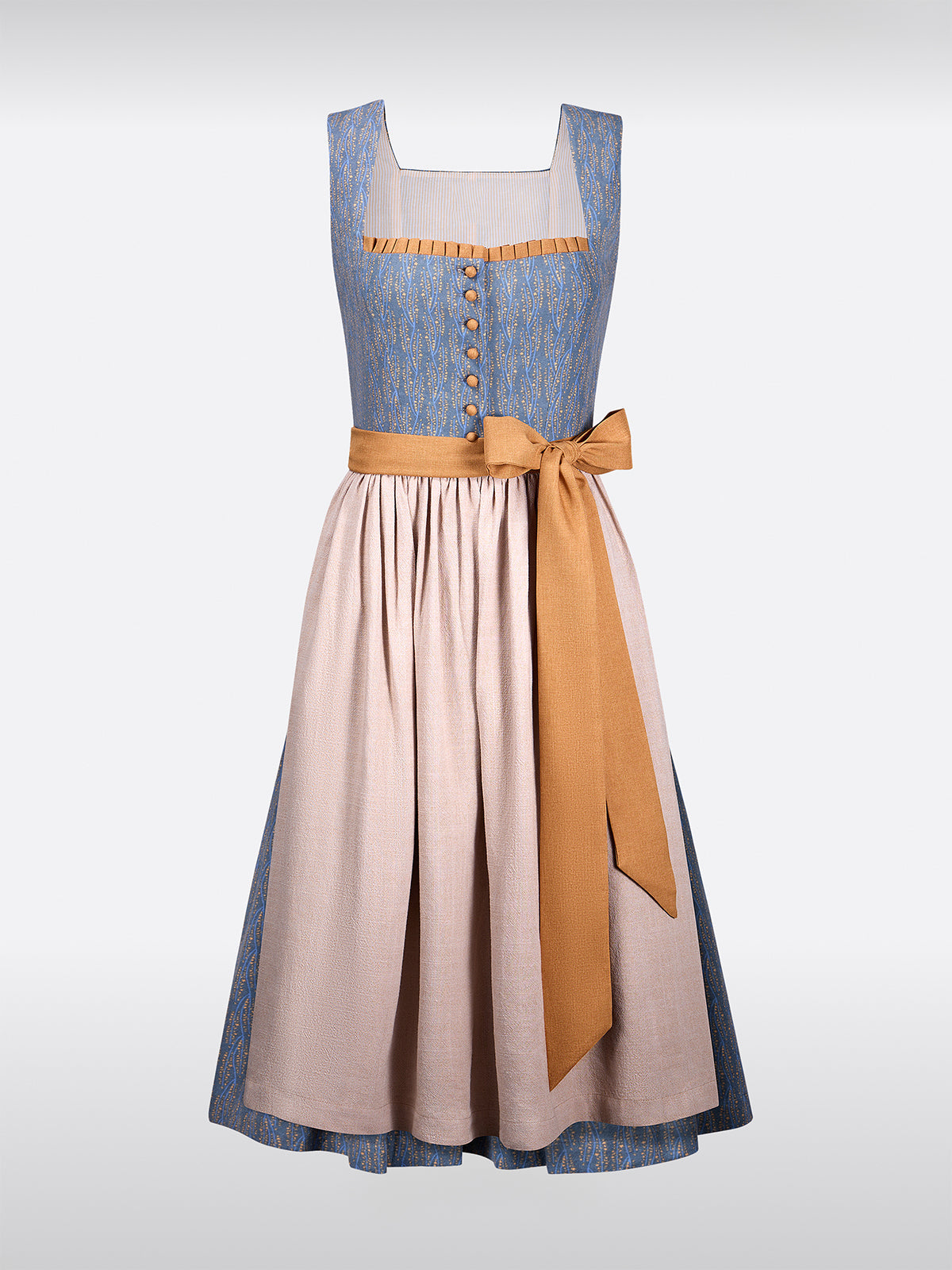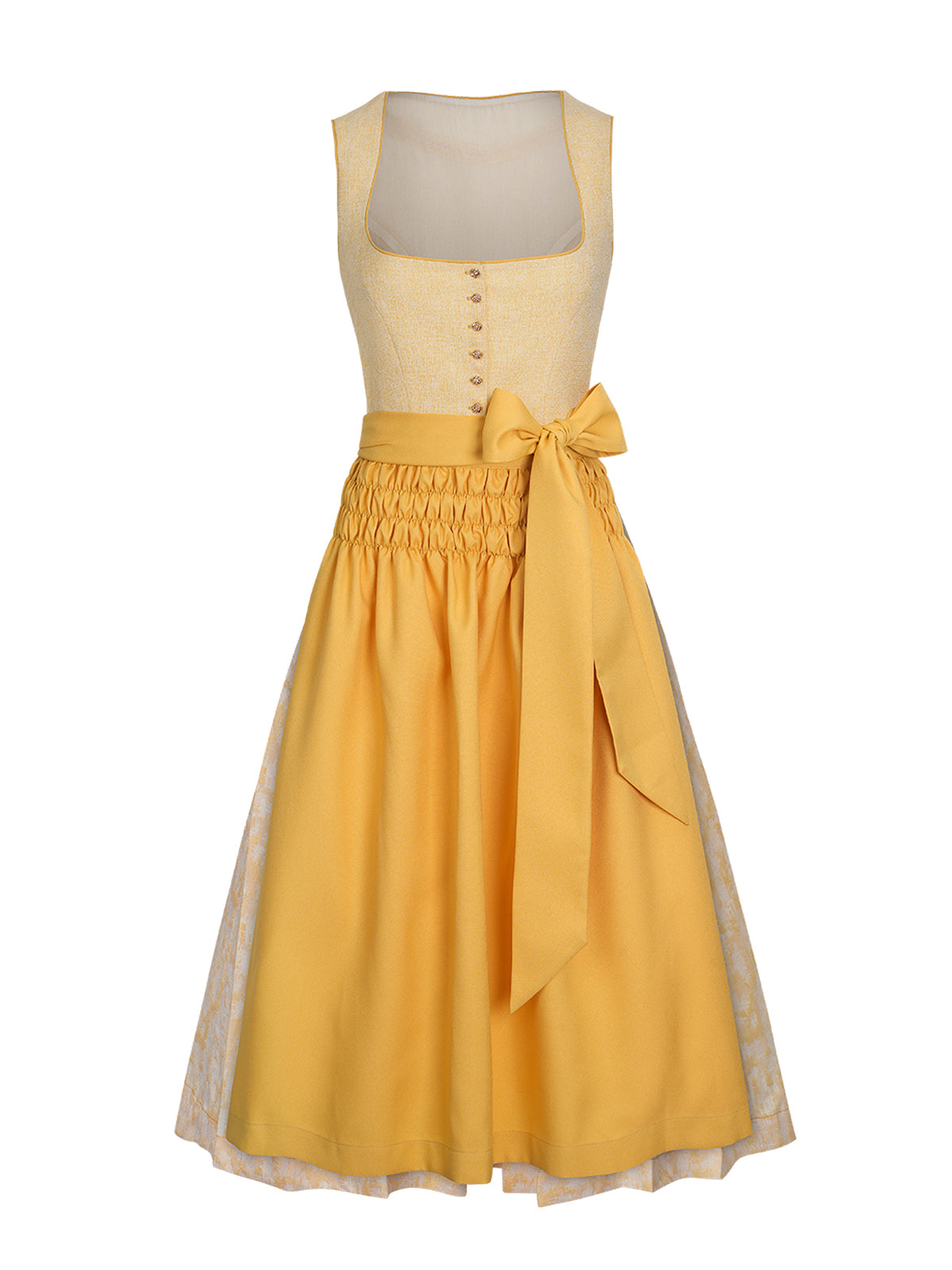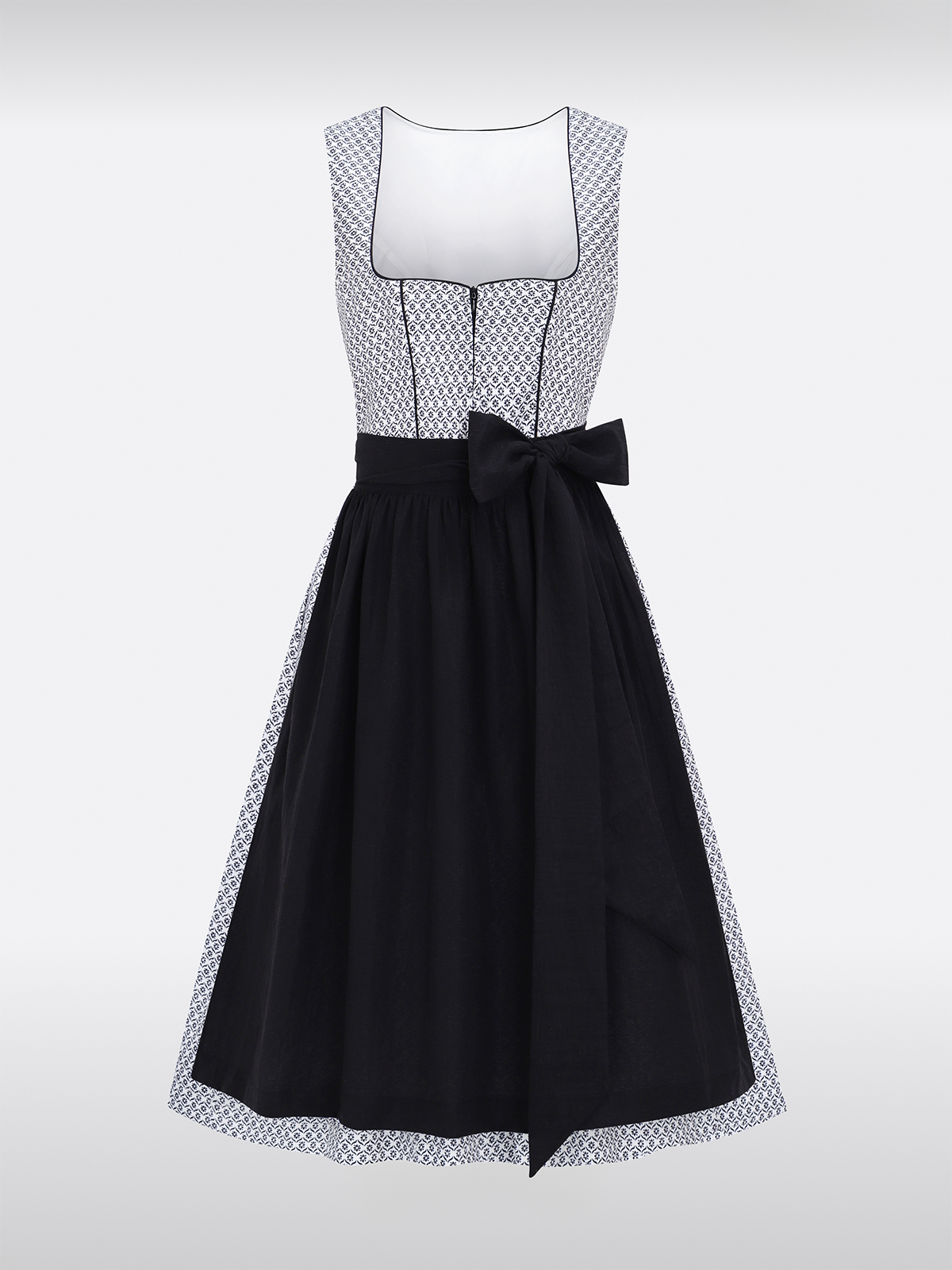In the streets of Munich, when the Oktoberfest is at its Bavarian heart, yellow dirndls dominate the view – shining like sunbeams over the Danube, elegant like the creations of a Viennese fashion designer. But this vibrant color is more than just a fashion statement: It reflects Bavarian history, social upheaval, and cultural identity. This article unfolds the thousand-year history of the dirndl, focusing on the symbiotic relationship between color, material, and social status – from the austere tones of peasant huts to the dirndl trend of 2025, which immerses Munich in a spectacle of color this autumn.
1. 14th century: The colors of poverty – brown clay and practical fabrics
In the High Middle Ages, dirndls were not fashion accessories, but instruments of survival. Women in the Bavarian Alpine regions wore coarse linen or wool fabrics in earthy tones such as brown, gray, or dark green. yellow dirndl In the narrower sense, yellow—dyed with ochre or saffron tones—were luxury items that only wealthy peasant families could afford. At that time, the color yellow signaled not happiness, but wealth: saffron, extracted from expensive herbs, was bound in tiny amounts in oil to dye textiles.
The cut was functional: a tightly buckled bodice made of suede protected against the cold, while the wide skirt made of recycled wool scraps offered freedom of movement. Interestingly, peasant women already used natural pigments to To tint dirndls yellow—plantain for light yellow, dandelion for golden nuances. These handmade tones were irregular and faded quickly, making them individual works of art.
2. 19th century: The Golden Revolution – nobility and industrialization
The 19th century brought a revolution for the dirndl: Industrialization made synthetic dyes like chrome yellow affordable, while Romanticism popularized Bavarian traditions among the nobility. Yellow dirndls became a symbol of the new middle class—no longer just practical, but an expression of national pride.
Aristocratic ladies had Viennese milliners craft yellow silk dirndls, decorated with gold embroidery in the Rococo style. The color yellow now stood for wealth and social advancement: For example, the Bavarian Crown Princess Therese wore a "sun yellow" dirndl adorned with 2,000 crystals at her wedding reception in 1810. At the same time, the tradition of lining the bodice with velvet arose—a luxury that became accessible to the middle class thanks to inexpensive cotton-velvet alternatives.
3. 1950s-1970s: Mass market and the democratization of yellow
After World War II, the dirndl became the hallmark of the economic miracle. Manufacturers like Trachtenmode Riefsteiner standardized yellow dirndls in mass production – the yellow was now uniform, chemically stable, and inexpensive. The color no longer symbolized exclusivity, but rather a sense of community: At the reopening of the Oktoberfest in 1950, 80% of visitors wore yellow dirndls, often combined with blue and white checked aprons as a tribute to Bavarian agriculture.
But in the 1970s a countermovement began: Young designers like Jil Sander experimented with dirndl trend 2025-predecessors – deconstructed bodices made of stretch fabric and asymmetrical aprons. The classic yellow was complemented by pastel shades, while velvet was used only in wedding dirndls.
4. 2020s: Neon yellow and postmodern fusions
Today, the dirndl is a globalized fashion item – and yellow dirndls are experiencing a renaissance.In 2023, Vivienne Westwood presented a collection featuring dirndl trends for 2025: neon-yellow leather dirndls combined with cyberpunk accessories. At the same time, designers like Lena Hoschek are returning to tradition, but with modern materials: recycled PET bottles are transformed into iridescent dirndl yellow, which shifts between amber and gold depending on the light.
The symbolism has also changed: While older generations While some once dismissed the yellow dirndl as a "working-class color," millennials see it as a vitality that harmonizes with sustainability ideals. The company Trachtwerk sold over 10,000 yellow dirndls made of organic cotton in 2024 – advertised with slogans like "Yellow like the future, solid like tradition."
Appendix: The Colors of History – Selected Dirndls in the Deutsches Museum
The Deutsches Museum Munich shows in its traditional costume department how dirndl yellow has changed through the centuries:
-
1450: Linen Dirndl from the Allgäu
- Tones: Ochre yellow with dandelion accents
- Material: 100% hand-woven flax yarn
- Special feature: residues of plant dyes in the hem
-
1890: Silk dirndl of the Bavarian Queen
- Tones: Chrome yellow with gold embroidery
- Material: Chinese silk, imported gold threads
- Historical context: Gift to the Crown Prince's bride
-
1972: Pop Art Dirndl of the Olympic Games
- Shades: Neon yellow with black mesh pattern
- Material: synthetic fibers, reflective accents
- Meaning: Symbol of the "Fresh Air" generation
-
2025: Limited Edition "Solaris"
- Shades: Iridescent yellow with solar cell effect
- Material: 70% recycled polyester, 30% hemp fabric
- Innovation: Integrated solar panel loop for chargers
Conclusion: Yellow as an eternal metaphor
From the dreary brown of poverty to the dazzling neon of the 21st century – Dirndl yellow always reflects the zeitgeist. Today, as the dirndl trend 2025 enriches climate conferences and fashion weeks, it becomes clear: color is never just aesthetics, but history, politics, and hope woven into the fabric. Whether in the dirndl of a farmer's wife or a cyberpunk designer, yellow remains Bavaria's unmistakable answer to the question of what tradition in motion means.

